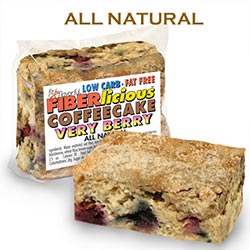Here at Linda’s Diet Delight we encourage healthy eating as a way of weight loss. Following both low carb and low calorie diets are both effective and healthy ways of losing weight and changing the way you eat food forever. However, every now and again some very strange and weird diets do the circuit, usually with supposed celebrity endorsement. We look at some of the most bizarre diets that have been around in recent years.
Cabbage Soup Diet
Obviously a diet that consists of only eating just one thing is going to get very boring, very quickly. However, this diet will probably have you losing friends quickly as well, not only will your house smell disgusting, but imagine the windy effect that consuming that much cabbage will have.
Cayenne Pepper Diet
Also known as the Master Cleanse Diet it’s reportedly backed by many an A-list celebrity, this concoction of maple syrup, lemon juice and cayenne pepper must leave you absolutely ravenous. Sure, you’ll lose some weight, I mean, there isn’t any actual solid food in this diet, but you’ll probably lose the will to live by day 2.
Twinkie Diet
A diet that consists of eating cake certainly has its appeal, but we rather suspect that it wanes rather rapidly. Severely lacking in anything remotely healthy, we can only imagine this diet regime would have you feeling very ill.
Baby Food Diet
Regress and embrace your inner infant by going out and buying some jars of baby food. Instead of eating your regular meals, have a jar of pureed mush instead. Quite besides how hideous they probably taste to an adult, the lack of being able to chew, the loss of any texture (except for mush), and the minute portions will have you falling off this wagon quicker than you can say goo-goo gaa-gaa.
Tapeworm Diet
This diet consists of digesting beef tapeworm eggs and then allowing the tapeworms to grow in your intestines. The tapeworms will then eat all the excess food in your system so that you are free to eat as you like, which is about as medieval as it gets. You don’t get to keep the tapeworms forever though; as soon as you’ve reached your goal weight you can take some medicine to kill the parasites. Side effects from this bizarre diet include vomiting, diarrhea, malnutrition, squashed internal organs and possible death. Nice!
The Air Diet
The principal behind this diet is that we don’t change the foods we eat or embark on a vigorous exercise regime, no this diet apparently works by simply breathing. Allegedly the more air you breathe, the more weight you lose. A big selling point to this diet is that you can do it anywhere, breathe that is, just in case you weren’t doing it before!
When you think about how the mischaracterization of the low carb diet as a “bizarre fad diet” has endured ever since Vogue Magazine published Dr. Atkins’ Diet Revolution in the late 1960s, you can see how unfair it is for diet and nutrition world to equate the restriction of carbs in one’s diet to one of these completely unfounded diets. While there is no doubt that the restriction of calories is the most obvious approach to weight loss, the restriction of carbs has clearly been proven to be just as viable and effective, and certainly deserving of a better moniker from the mainstream health organizations just a “fad diet.”








